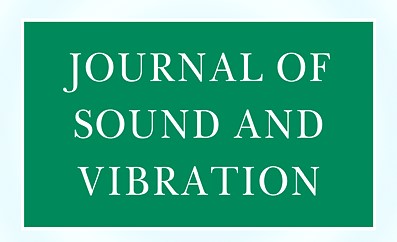Thomas Breunung

Hi, I’m Thomas.
I am postdoctoral researcher working with Prof. B. Balachandarn on nonlinear dynamical systems.
I analyze complex dynamical systems to uncover and understand their fundamental dynamics. To this end, I extend existing approximation methods, program computational tools and perform analytical studies. My research interest include reduced order modelling, approximation methods and random vibrations. I focus on engineering applications such as vibration suppression, stability analysis and calculation of the forced response (FRF plots).
News & Updates
NEW Publication Appeared in Journal of Sound and vibration
August 3, 2024:
Experimental modal analysis is commonly used to identify models for the vibratory behavior of structures. This is done by conducting a set of experiments to obtain the structure’s governing equations and information in the form of eigenfrequencies, mode shapes, and damping. However, linearity of the test structure is assumed within this identification procedure. Hence, as it stands, experimental modal analysis is not readily applicable to build models when nonlinearities are present through, for example, friction, (electro-) magnetic fields, or large deformations. To identify governing equations for such systems, a robust and systematic identification procedure is proposed in this article. The identification routine is formulated in the frequency domain, and a noise reduction scheme and a simplification routine are employed to obtain sparse and robust models. The identification procedure is implemented in an automated script (FrID), which is applied to forced response measurements stemming from structures with magnets, clamps, and bolted joints as well as systems with multiple active modes and internal resonances. The identified governing equations accurately fit the experimentally obtained frequency response measurements and can also be utilized to extrapolate the response for different forcing amplitudes. Moreover, nonlinear modes of the underlying conservative system can be computed from the identified governing equations.
Read more: [DOI]

Research featured in multiple News Outlets
July 20, 2024:
Our research on rogue waves has been featured on national and international news outlets.
Read more: [UMD] [National Public Radio] [USA Today] [Haaretz] [Geo] [UN DDR]

New Publication appreared in Scientific reports
July 18, 2024:
Freak or rogue waves are a danger to ships, offshore infrastructure, and other maritime equipment. Reliable rogue wave forecasts could mitigate this risk for operations at sea. While the occurrence of oceanic rogue waves at sea is generally acknowledged, reliable rogue wave forecasts are unavailable. In this paper, the authors seek to overcome this shortcoming by demonstrating how rogue waves can be predicted from field measurements. An extensive buoy data set consisting of billions of waves is utilized to parameterize neural networks. This network is trained to distinguish waves prior to an extreme wave from waves which are not followed by an extreme wave. With this approach, three out of four rogue waves are correctly predicted 1 min ahead of time. When the advance warning time is extended to 5 min, it is found that the ratio of accurate predictions is reduced to seven out of ten rogue waves. Another strength of the trained neural networks is their capabilities to extrapolate. This aspect is verified by obtaining forecasts for a buoy location that is not included in the networks’ training set. Furthermore, the performance of the trained neural network carries over to realistic scenarios where rogue waves are extremely rare.
Read more: [DOI]

appointment as Assistant Professor
May 30, 2024:
On January 1, 2025 I will start as Assistant Professor (tenure track) at the Mechanical Engineering Department of the University of Wisconsin, Madison. My research will include structural dynamics, vibrations, and nonlinear dynamics using a blend of analytical studies, computational approaches, and experiments.
Read more: [UW-Madison Announcement]

